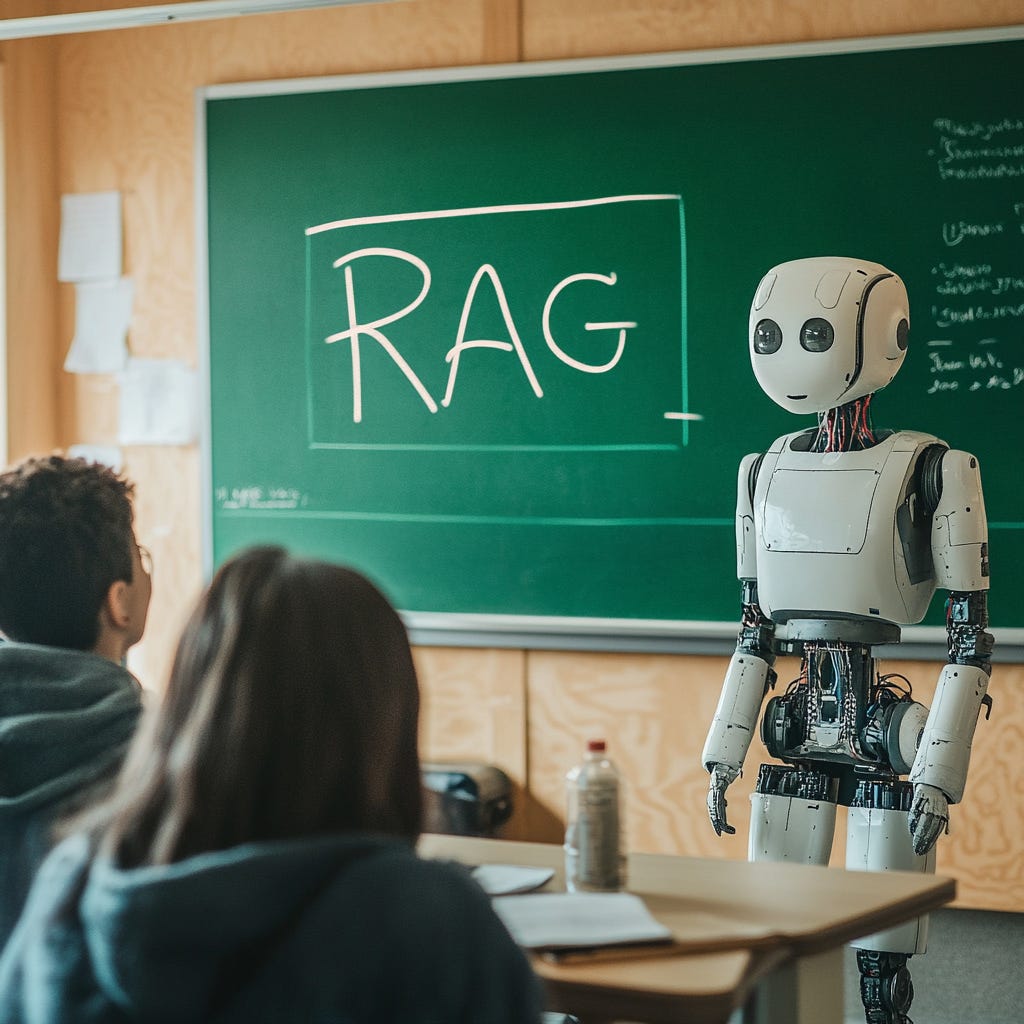10 editions that covered the fundamental RAG methods in generative AI.
Today we will Discuss:
A summary of our 10 installments about RAG techniques.
💡 AI Concept of the Day: A Summary of our RAG Series
Today we would like to provide a summary of our series about retrieve augmented generation(RAG).
Conceptually, RAG is an architectural framework that enhances the functionality of large language models (LLMs) by incorporating external data retrieval mechanisms. This integration allows LLMs to access real-time, relevant information, thereby addressing the limitations of traditional generative models that rely solely on static training data. By retrieving pertinent documents or data points in response to specific queries, RAG ensures that the generated outputs are not only contextually appropriate but also factually accurate, significantly reducing the incidence of outdated or erroneous information. This capability is particularly beneficial in applications such as customer support and knowledge management, where timely and precise responses are critical.
The primary methods employed in RAG involve a two-stage process: first, retrieving relevant information from a curated set of external sources, and second, utilizing this information to inform the generation of responses. This dual approach allows RAG to dynamically augment the generative capabilities of LLMs with up-to-date context, enhancing their performance across various tasks. Techniques such as vector-based retrieval and query expansion are commonly used to improve the relevance and accuracy of the retrieved information. Furthermore, RAG systems can be designed to include mechanisms for citation and source attribution, enabling users to verify the accuracy of the generated content and fostering trust in AI outputs.
Despite its advantages, implementing RAG poses several challenges that organizations must navigate. One significant hurdle is the complexity of integrating retrieval systems with generative models, which requires specialized knowledge in both natural language processing and information retrieval. Additionally, the effectiveness of a RAG system is heavily dependent on the quality and reliability of the external data sources it utilizes; poor-quality data can lead to misleading outputs or propagate inaccuracies. Latency issues can also arise during retrieval operations, particularly when accessing large datasets or multiple sources simultaneously, potentially impacting user experience in time-sensitive applications.
Throughout this series, we will be exploring the core RAG methods as well as relevant research in the space.
During the last few weeks, we have covered some of the top RAG techniques in generative AI. Here is a summary:
1. The Sequence Knowledge #468: Introduces our series about RAG and discusses the original RAG paper by Meta AI Research.
2. The Sequence Knowledge #473: Discusses the different types of RAG. It also reviews the REALM technique that uses RAG during pretraining.
3. The Sequence Knowledge #478: Dives into Speculative RAG including the original paper that proposed this technique by Google Research.
4. The Sequence Knowledge #482: Discusses Corrective RAG including the paper that introduced this technique.
5. The Sequence Knowledge #487: Reviews the ideas behind Self-RAG. It also discusses Allen AI’s paper that first outlined the principles of Self-RAG.
6. The Sequence Knowledge #492: Presents the concepts of Fusion-RAG and dives into the original research paper on this topic.
7. The Sequence Knowledge #497: Dives into the novel ideas behind GraphRAG and review Microsoft Research new paper in that subject.
8. The Sequence Knowledge #502: Goes back to review one of the techniques that inspired the RAG movement: Hypothetical Document Embeddings(HyDE). The issue also review the original HyDE paper by researchers from Carnegie Mellon University.
9. The Sequence Knowledge #507: Expands beyond language to review the concepts of Multimodal RAG. It also reviews the ColPali paper that outlines a RAG technique for computer vision models.
10. The Sequence Knowledge #512: The last installment of the series dives into the ideas of RAG vs. Fine-Tuning including UC Berkeley’s paper about retrieval augmented fine tuning.
I hope you enjoyed this series. For our next one we are going to dive into a pretty hot topic in generative AI: evaluations and benchmarks.
#Ai, #AIResearch, #Applications, #Approach, #Benchmarks, #CarnegieMellonUniversity, #Complexity, #Computer, #ComputerVision, #Content, #Data, #DataSources, #Datasets, #Embeddings, #Employed, #FineTuning, #Framework, #Fundamental, #Fusion, #Generative, #GenerativeAi, #GenerativeModels, #Google, #GraphRAG, #Ideas, #InformationRetrieval, #Integration, #Issues, #It, #Language, #LanguageModels, #LargeLanguageModels, #Latency, #LLMs, #Management, #Meta, #MetaAI, #Microsoft, #Models, #Movement, #Multimodal, #Natural, #NaturalLanguage, #NaturalLanguageProcessing, #One, #Operations, #Organizations, #PAID, #Paper, #Performance, #Process, #QualityData, #Query, #RAG, #RealTime, #ReALM, #Reliability, #Research, #Review, #Reviews, #Sensitive, #Space, #Time, #Training, #TrainingData, #Trust, #Tuning, #Uc, #University, #UserExperience, #Vector, #Vision, #Vs, #Work
Published on The Digital Insider at https://is.gd/win10E.

Comments
Post a Comment
Comments are moderated.